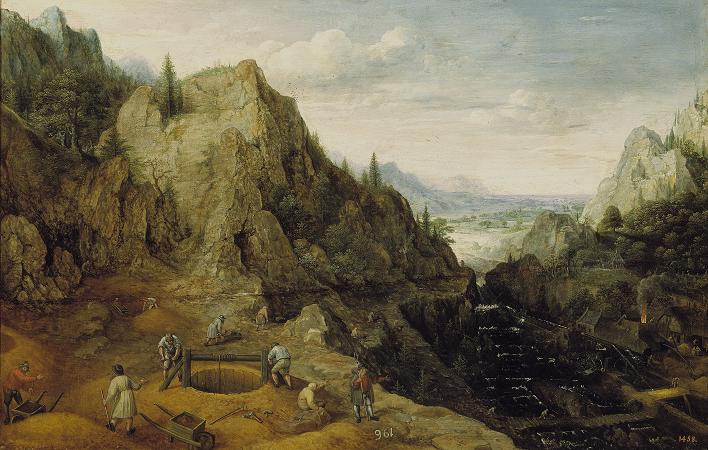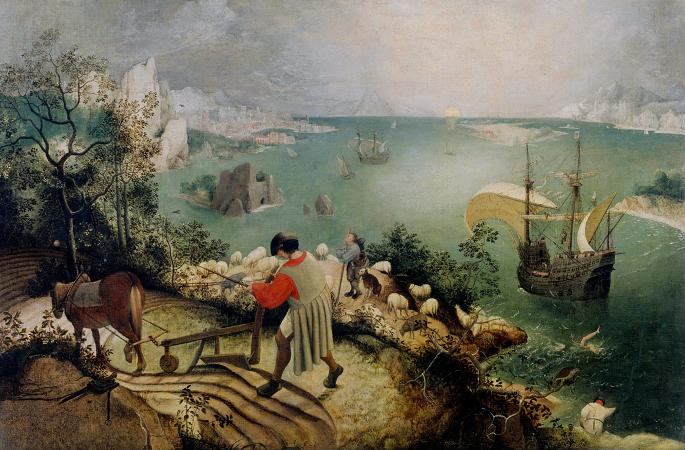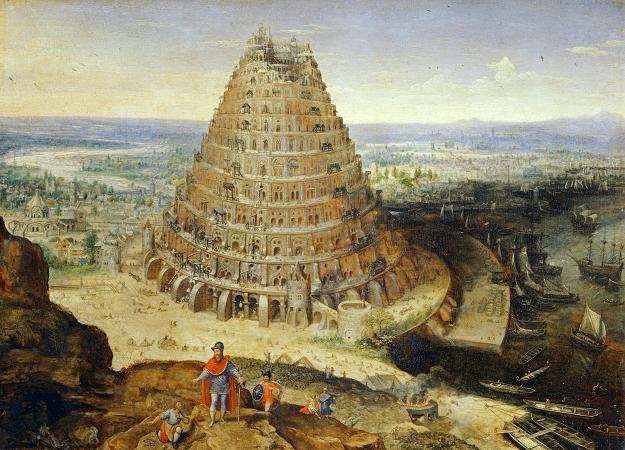Lucas van Valckenborch (1535 - 1612). Lucas van Valckenborch or Lucas van Valckenborch the Elder was a Flemish painter, mainly known for his landscapes. He also made contributions to portrait painting, and allegorical and market scenes. Court painter to Archduke Matthias, the governor of the Spanish Netherlands in Brussels, he later migrated to Austria and then Germany where he joined members of his extended family of artists who had moved there for religious reasons. Lucas van Valckenborch was born in Leuven in what would become one of the most prominent Flemish families of artists. Spanning three generations, 14 artists are recorded in the family of whom his older brother Marten the Elder and the sons of the latter, Frederik van Valckenborch and Gillis van Valckenborch, were the most important personalities. On 26 August 1560 he is recorded as entering the painters' guild of Mechelen. Mechelen was known at the time as a center for oil and water-colours and especially landscape painting. The artistic milieu of Mechelen was decisive on the development of the artist. Lucas van Valckenborch learned in Mechelen the art of watercolour painting. Here he also got to know the prominent painters Pieter Bruegel the Elder and Hans Bol, who both played an important role in the development of landscape painting in the Low Countries. The 17th-century biographer Karel van Mander reported that Lucas van Valckenborch learned to paint landscapes in Mechelen. At the start of the iconoclastic fury of the Beeldenstorm in 1566 Lucas van Valckenborch left Antwerp with his brother Marten van Valckenborch, probably for religious reasons as they may have been protestant. A series of topographical views, including a 1567 painted view of Liege, prove that van Valckenborch travelled up the Meuse valley. This trip played an important role in his development as a landscape artist working directly from nature. In 1570 the artist was in Aachen, where he met up again with his brother Marten. Here, the two brothers were also joined for two years by Hans Vredeman de Vries, friend and fellow artist. By 1575 Lucas had returned to Antwerp, where he must have made a name for himself. Before 1579 the young Archduke Matthias of Austria, the governor of the Spanish Netherlands, hired him as his court painter. The Archduke was particularly impressed by his skills as a portrait painter. As court painter, Valckenborch created in the Netherlands some works for the Archduke, including the designs for the Archduke's Guard and some portraits. After the Archduke lost his position as governor in 1582, the Archduke left the Netherlands and went to live in Linz without position. It is not clear when Lucas van Valckenborch joined the Archduke in Linz. Van Mander describes the pair traveling together down the Danube. There is no documentary evidence for this but it is assumed that he arrived in Linz in 1582 or earlier, and stayed there until June 1582 at least. Two bills from Kremsmunster prove that he actually spent time in Upper Austria. At the beginning of 1593 Lucas van Valckenborch joined his brother Marten in Frankfurt am Main. Here he became the teacher and collaborator of Georg Flegel. He remained active in Frankfurt until his death in 1597. Lucas van Valckenborch is mainly known for his landscapes, which depict existing and imaginary scenes. He also painted portraits for his patron Emperor Matthias. He was further a figure painter as is shown in a series of nine allegories of the seasons painted in Frankfurt from 1592. Valckenborch's earliest dated works are from 1567. His monogram was L / VV or LVV. Early in his career he placed the 'L' below the two 'V's, while after 1570 he signed with the letters inverted. His style was close to that of Pieter Brueghel the Elder, but he modified this influence in a personal manner and was not a slavish copyist. His work was rooted in the same Flemish tradition, without following the newer Mannerist movement. Van Valckenborch worked largely in the tradition of the so-called world landscape of panoramic vistas shown from a bird's-eye viewpoint. This style of landscape painting was developed in Antwerp in the first half of the 16th century by artists like Joachim Patinir, Herri met de Bles and Pieter Bruegel the Elder. It was also practised by Lucas van Valckenborch's contemporaries such as Gillis Mostaert and Gillis van Coninxloo. Van Valckenborch also painted topographically accurate landscapes. Joris Hoefnagel is believed to have used his topographical drawings, for instance the drawn View of Linz, for his designs for the six-volume atlas, the Civitates orbis terrarum, published by Georg Braun and Frans Hogenberg between 1572 and 1617.
more...












